Club León occupied eighth place in the Mexican league, Apertura of Liga MX, qualifying for the final series play-offs and then exiting from the Apertura Quarter Finals against Club América. Still, they have shown excellence in set pieces, especially corner kicks. They have scored the second-most set-piece goals in Liga MX with six, joined level alongside Atlético de San Luis and behind Club América with seven goals.
We also observed an important factor, which is the considerable disparity between León and Club América in the standings and the goals scored overall, where Club América is in the top position with 46 goals as the most powerful attack line in the league, while León is in the eighth position with 30 goals, ranking it sixth in the order of the most potent attack line.
In other words, Club América scored seven goals from corner kicks out of a total of 46 with a percentage of 15%, while León scored six goals from corner kicks, but out of a total of 30 goals scored with a percentage of 20%, which reflects the greater impact of corner kicks on León.
What attracted our attention more and more is the use of simple principles that any team can implement, but they yield very effective results, especially when they become repeated and continuous, as they always look in one way or another to increase their chances of winning every duel, whether the first or the second touch or even when the ball rebounds from the defence.
In this tactical analysis, we will discuss their simple, diverse and tricky tactics to know how they design effective corner routines with some straightforward principles.
Using packs
By employing packs, they demonstrated remarkable proficiency, which conferred numerous and diverse benefits on them. Overall, it can be said that packs simply augment their probability of getting the ball and prevailing in the aerial contest in various manners. They might use them to overload the designated area, thereby enhancing their likelihood of winning the contest by having a greater number than their adversary in the designated area. Alternatively, they might divert the defenders’ attention, leaving behind a player who will seize the ball from an unmonitored free movement position. Or they might exploit them in a reverse way, standing in a place that is not targeted to vacate the targeted place where this player standing behind them moves. All of this will be explained in detail.
In the first photo below, the opponent defends with four players in the first zonal line: a player in front of them to defend flicks, three man-markers, a short-option defender and a player for the rebound. So it is clear that man markers are in a 5-v-3 situation against León’s pack with two free attackers, as in the second photo.
All of this pack goes to the targeted area, so they get the first touch, mainly because of the two free attackers who jump high, as in the third photo, but the ball goes beside the ball, as in the fourth photo.
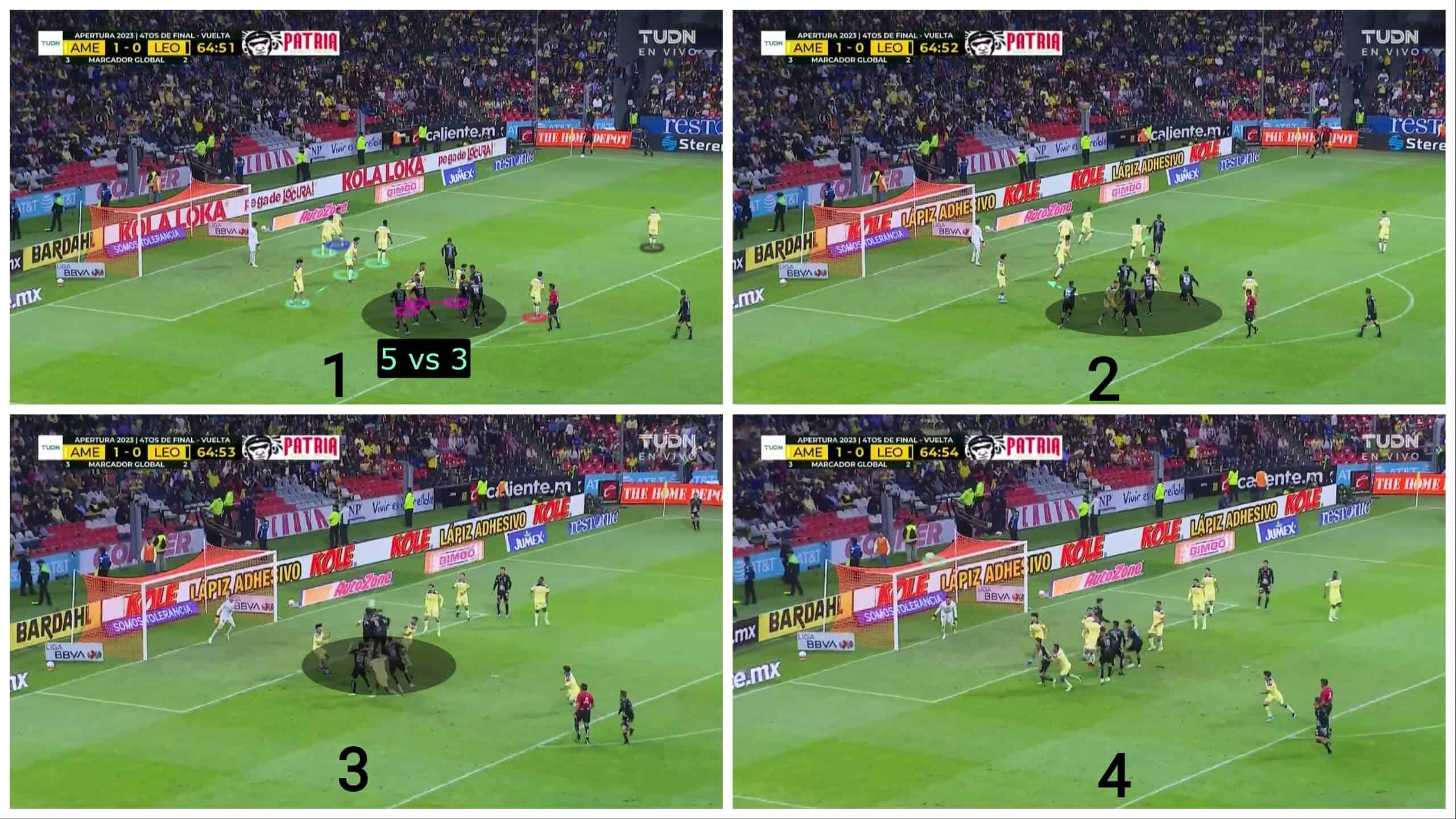
In the case below, they use the same idea but with a different role for the free player. They make him start at the back, far away from the defenders’ attention, and then, he moves to the targeted area with his momentum, achieving a dynamic mismatch. Let’s know how!
In the first photo, the same 5-v-3 situation is also evident. However, here, the last attacker waits behind and then rushes to the targeted area, taking advantage of the observers’ focus with the attackers in the front, coming from a movement position and thus surpassing the zonal defenders who jump from a stable position, which is called a dynamic mismatch, as shown in the second and third photos.
But the ball goes above the crossbar, as shown in the fourth photo.
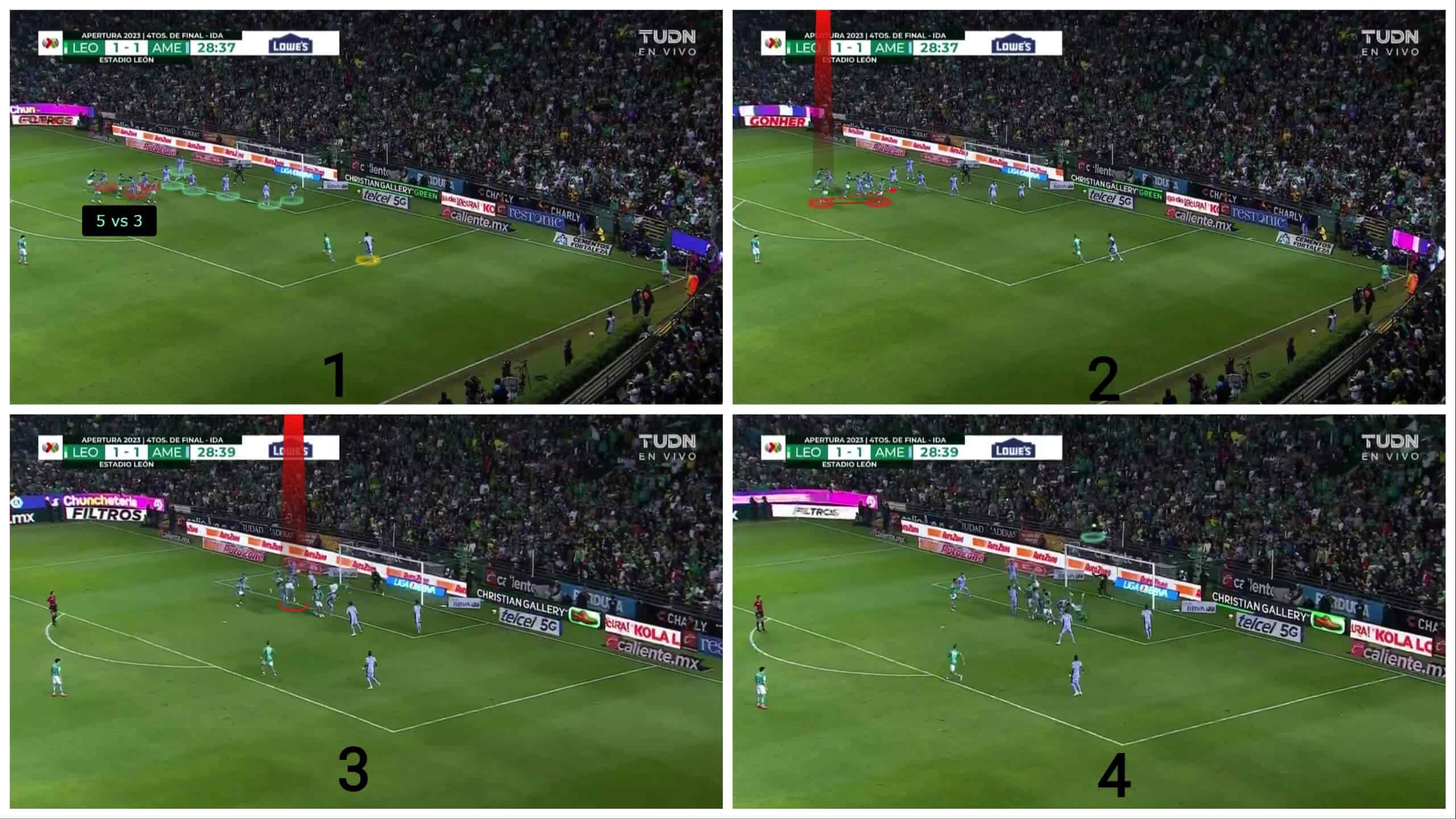
We also identified another benefit of their application of packs, whereby the attackers in the front can obstruct the defenders from accessing the ball for the attacker in the rear, regardless of whether that is deliberate or due to an imprecise cross. There is an opportunity for an unmarked man, assisted by his colleagues, to reach it.
So in the first photo below, The opponent defends slightly outwardly due to the outwardly curved cross with four defenders in the first zonal line, three defenders in the second zonal line, two short-option defenders, one is near, and one is ready, and a rebound defender.
In the second photo, they waited in the targeted area, blocking the defenders to free the last one of them, as shown in the third and fourth photos. Here, we note an important aspect: they may not have planned that, but that enhances the probability of securing the ball. A group challenges the ball in the air, and another anticipates in case they are unsuccessful, or the ball deflects from the defenders or in case the cross is slightly beyond the expected range. We do not play PlayStation, and hence, the pack has a significant advantage in augmenting the odds of obtaining the ball.
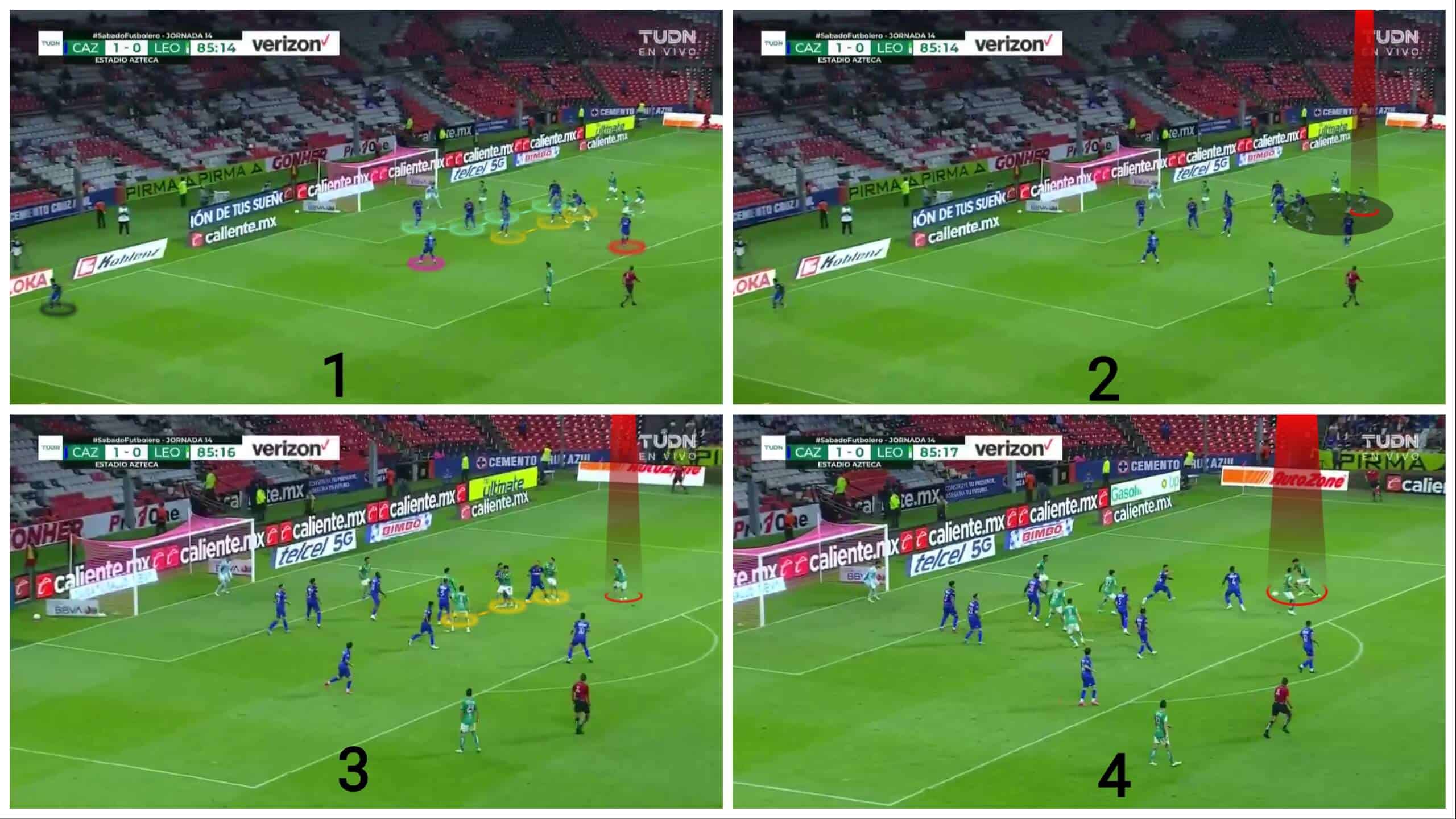
The result is a good shot, but the goalkeeper saves it.
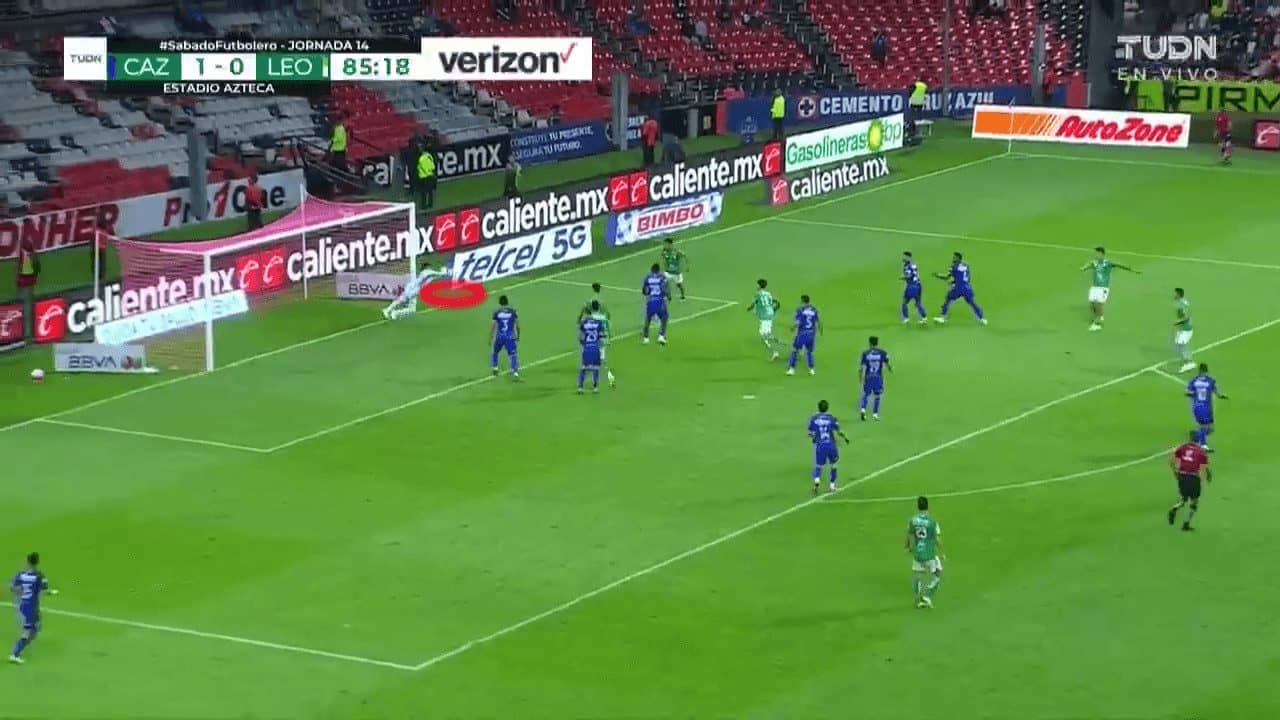
We have reached the final benefit of using packs, which is contrary to all that preceded it. As we know, variation is one of the most crucial principles of success in set-pieces. Therefore, the deception was that they did not aim for the area where the pack was but rather exploited the free player, due to the numerical superiority over the man markers, to assault another area to astonish the opponent, as shown below. This is also a vital principle in corner kicks, namely the misdirection.
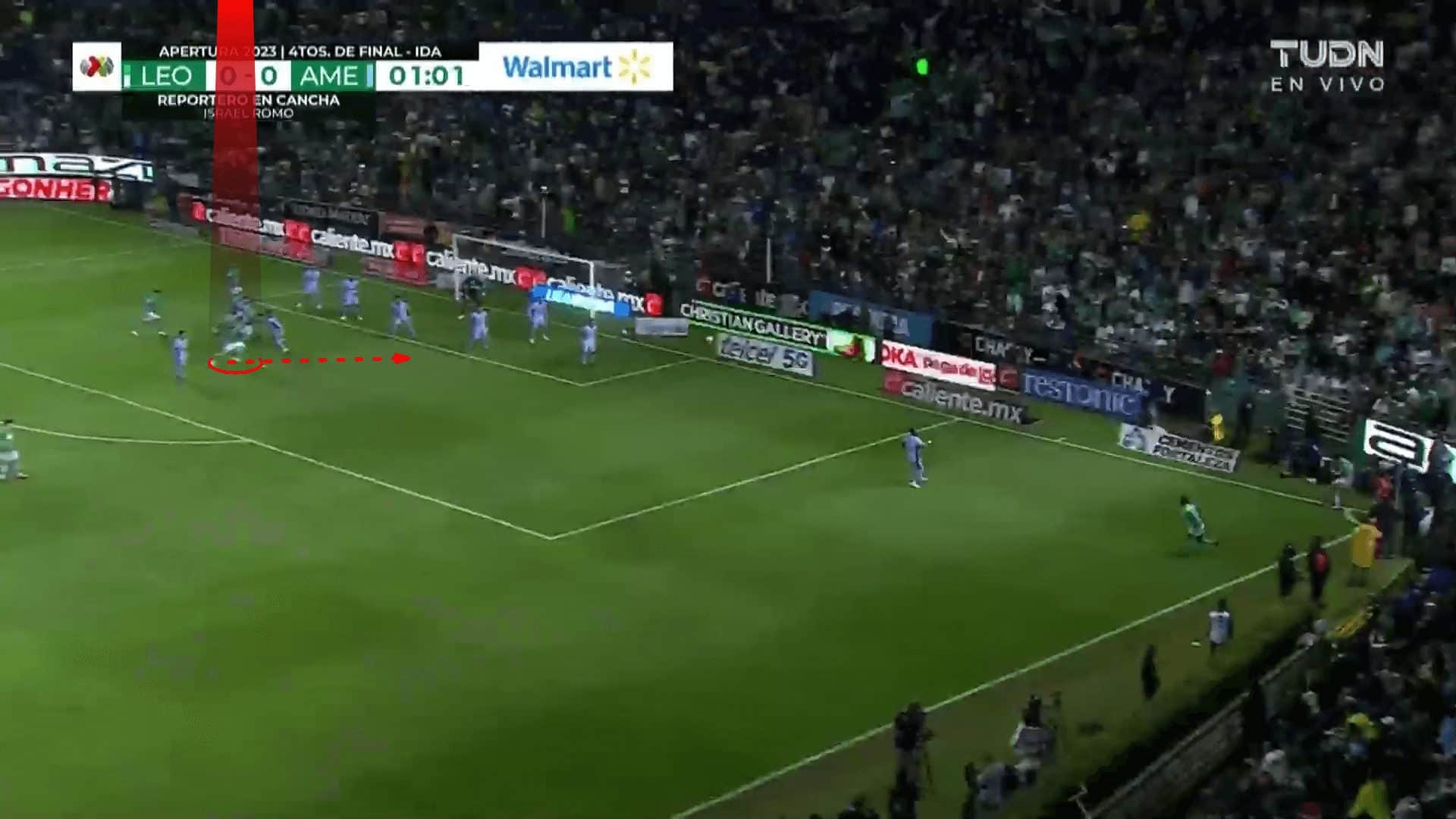
Here, he gets the ball using the dynamic mismatch we talked about.
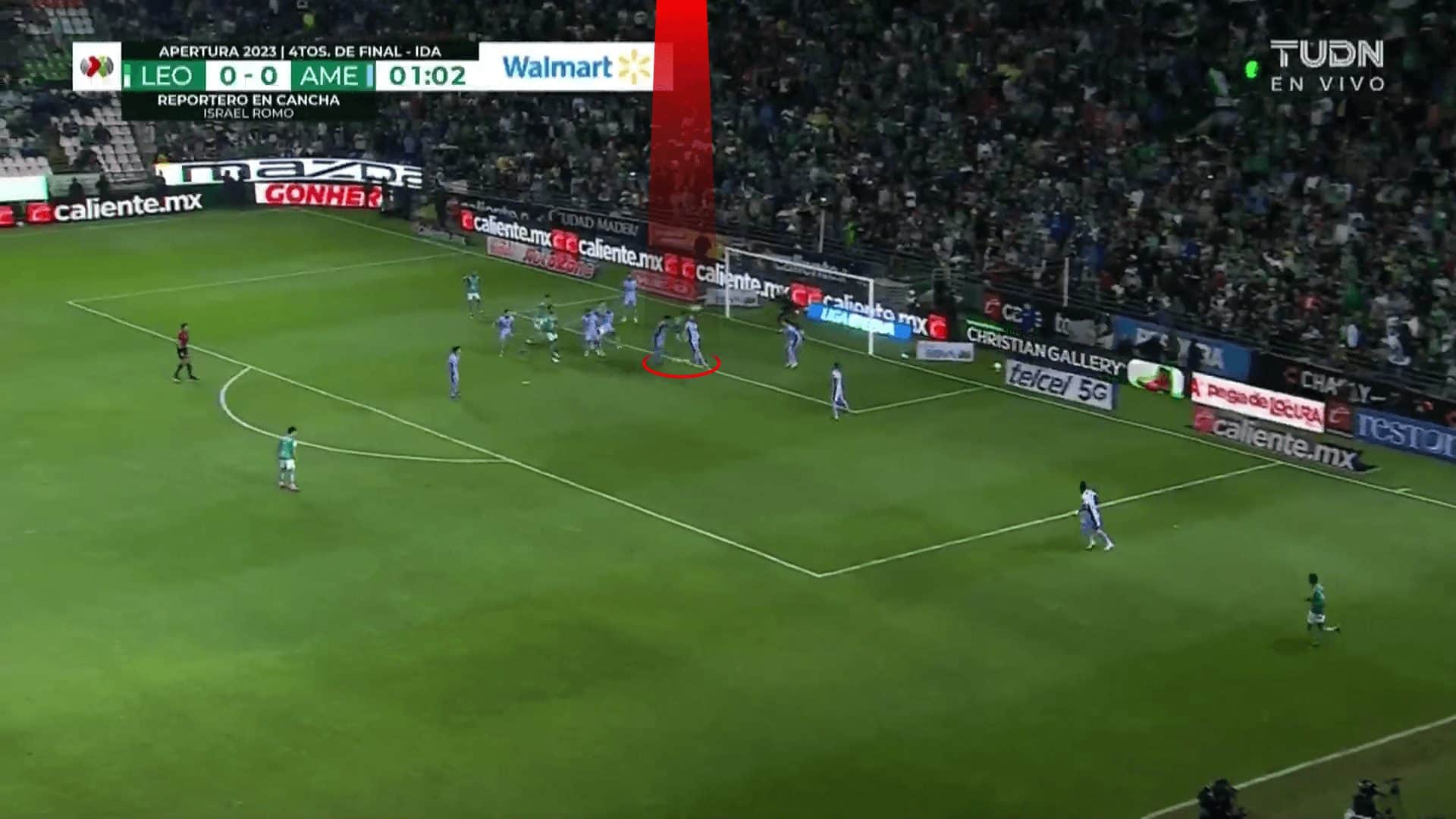
The result is a goal, as shown below.
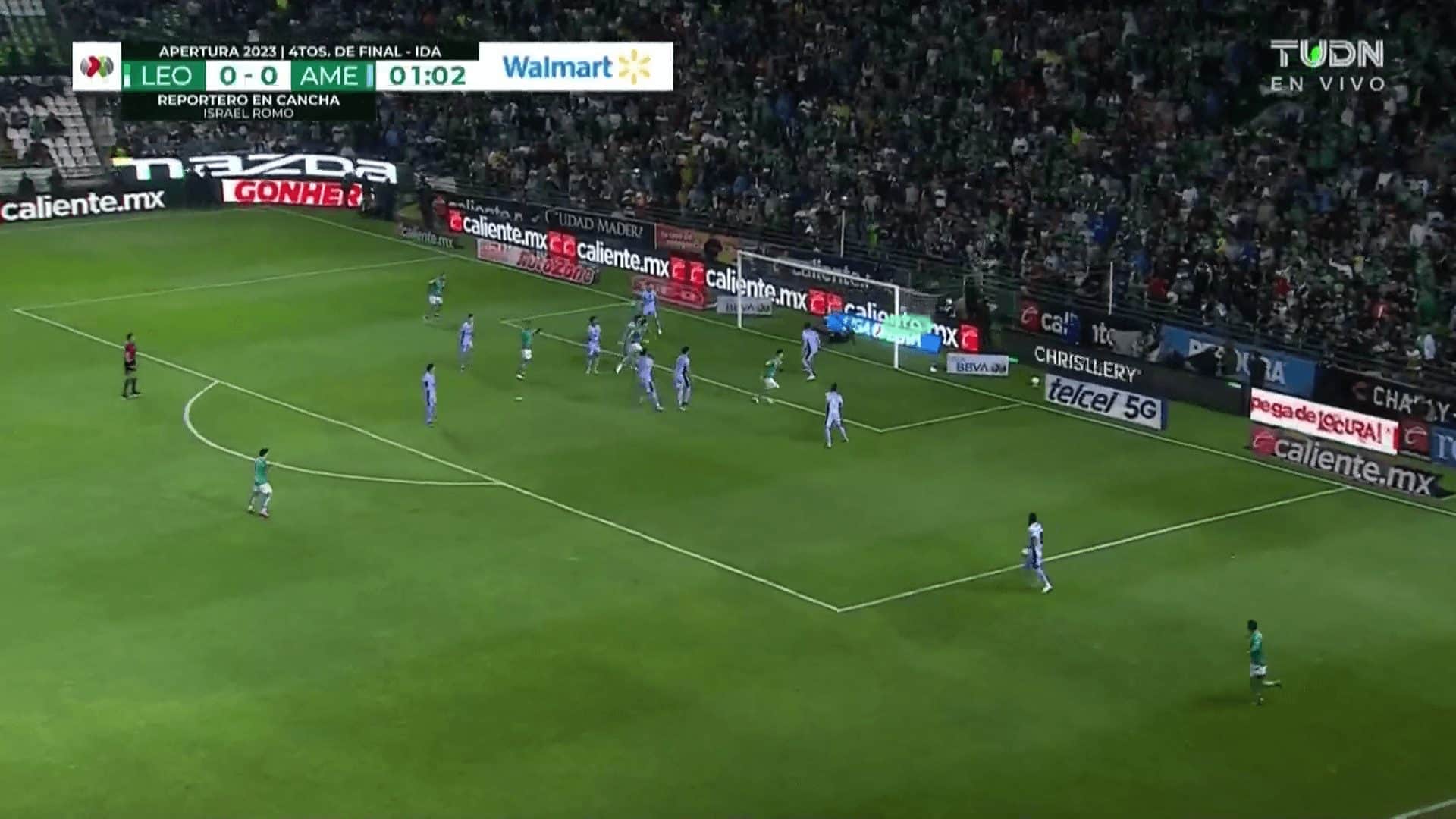
Framing the ball
We also continue to discuss the basic principles they employ that produce significant outcomes. We examine their implementation of framing the ball, which leads to having a minimum of one attacker in the ball’s landing location, as shown in the first photo below.
In the second photo, the highlighted attacker can see the ball well, measuring the place where the ball lands, as in the third photo. The result is a goal, as shown in the fourth photo.
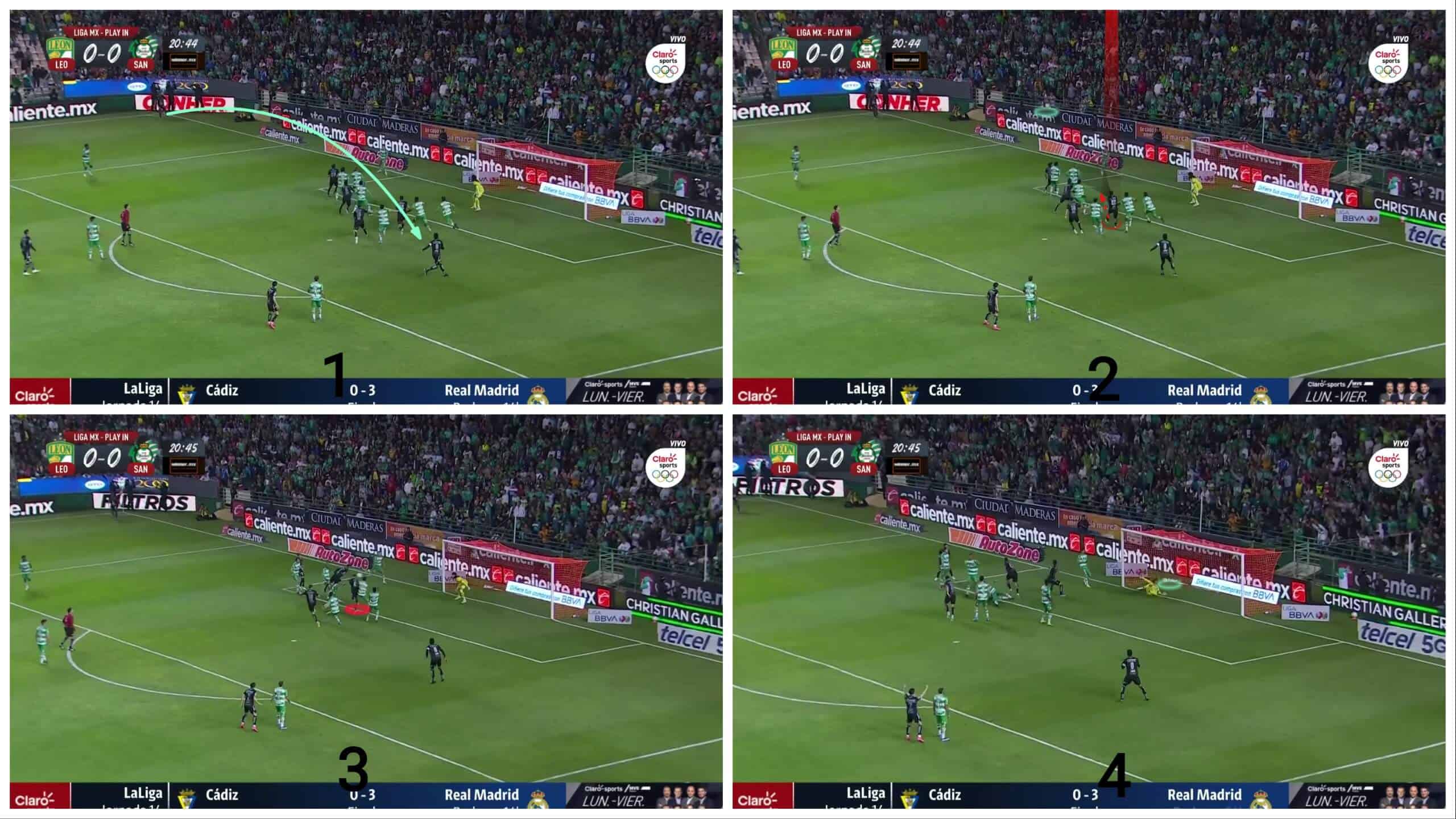
Short corners
They also sometimes use short corners as a surprising variation by starting without short-option attackers, but one comes from the box suddenly, as we will explain in detail.
In the first photo, the opponent is defended by a man-marking defending system with only two zonal defenders in green. Here, we can note two attackers in the rebound zone to fix two defenders with them to make sure that the short area is empty to target it suddenly by a player from the box.
In the second photo, the first zonal defender takes a long time to get there, which makes it easy for the attacker to pass it back to the taker, who crosses the ball on the far post where some players move toward the ball to free the one behind them exploiting the defenders’ focusing on the ball, so they have a problem in orientation, as in the third and fourth photos.
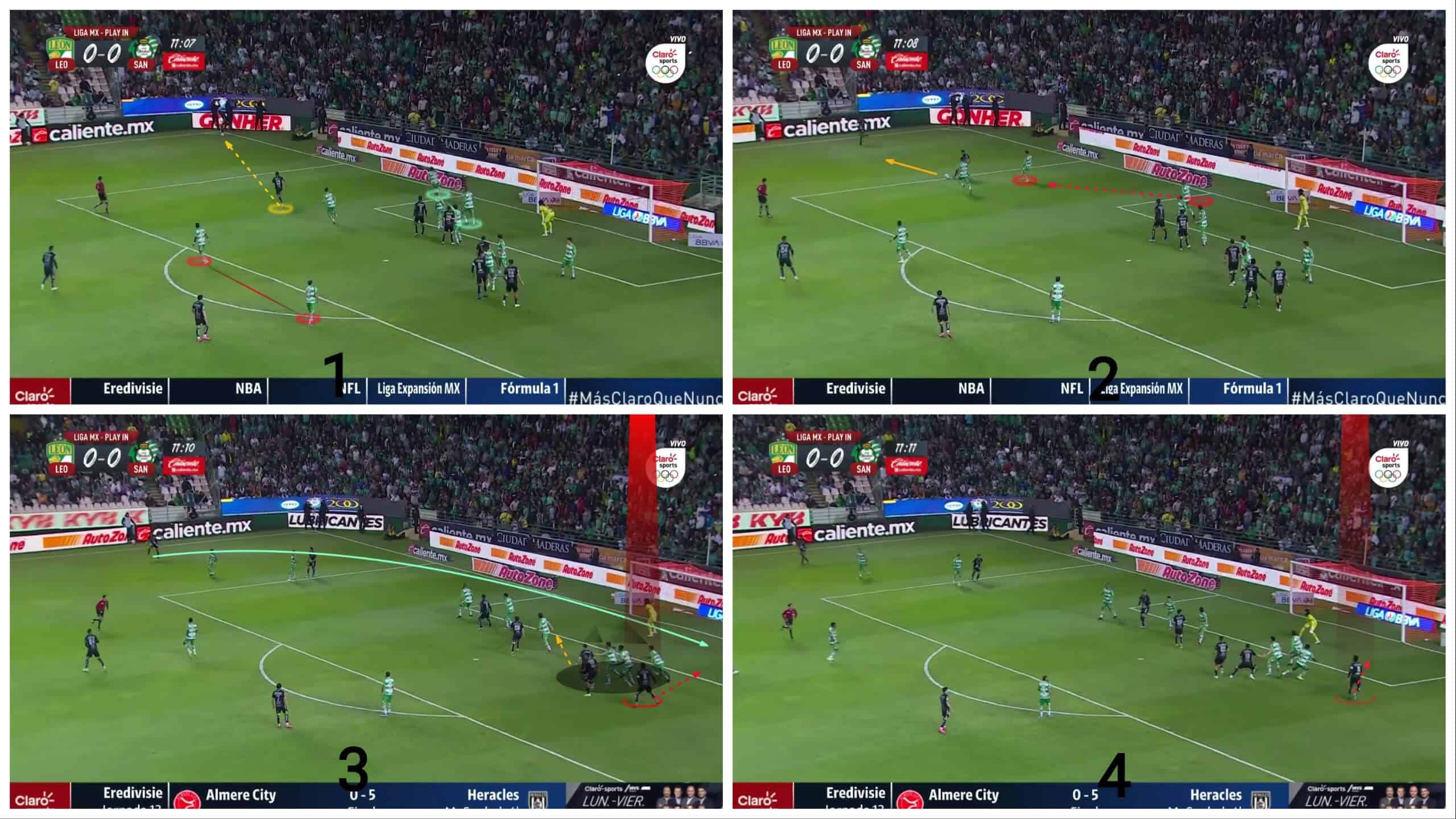
But the cross goes behind him, not close to the far post, so the defender gets back to annoy him.
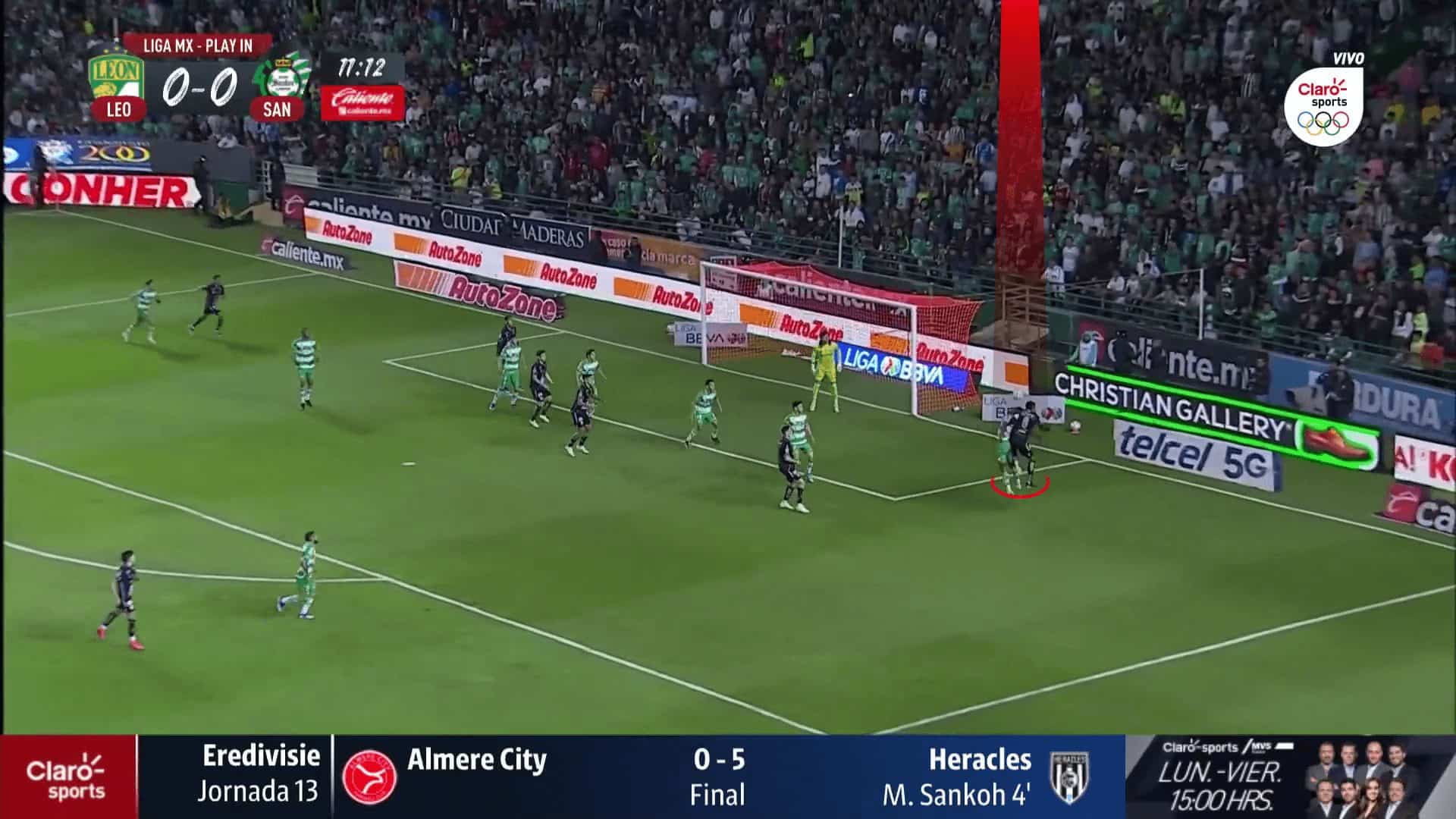
They have no problem when the opponent defends the short area by two players from the beginning because they are always ready to achieve numerical superiority over a third player in a 3-v-2 situation, as shown in the first photo below.
The third player gets the ball while the same plan is done on the far post, as shown in the rest of the photos.
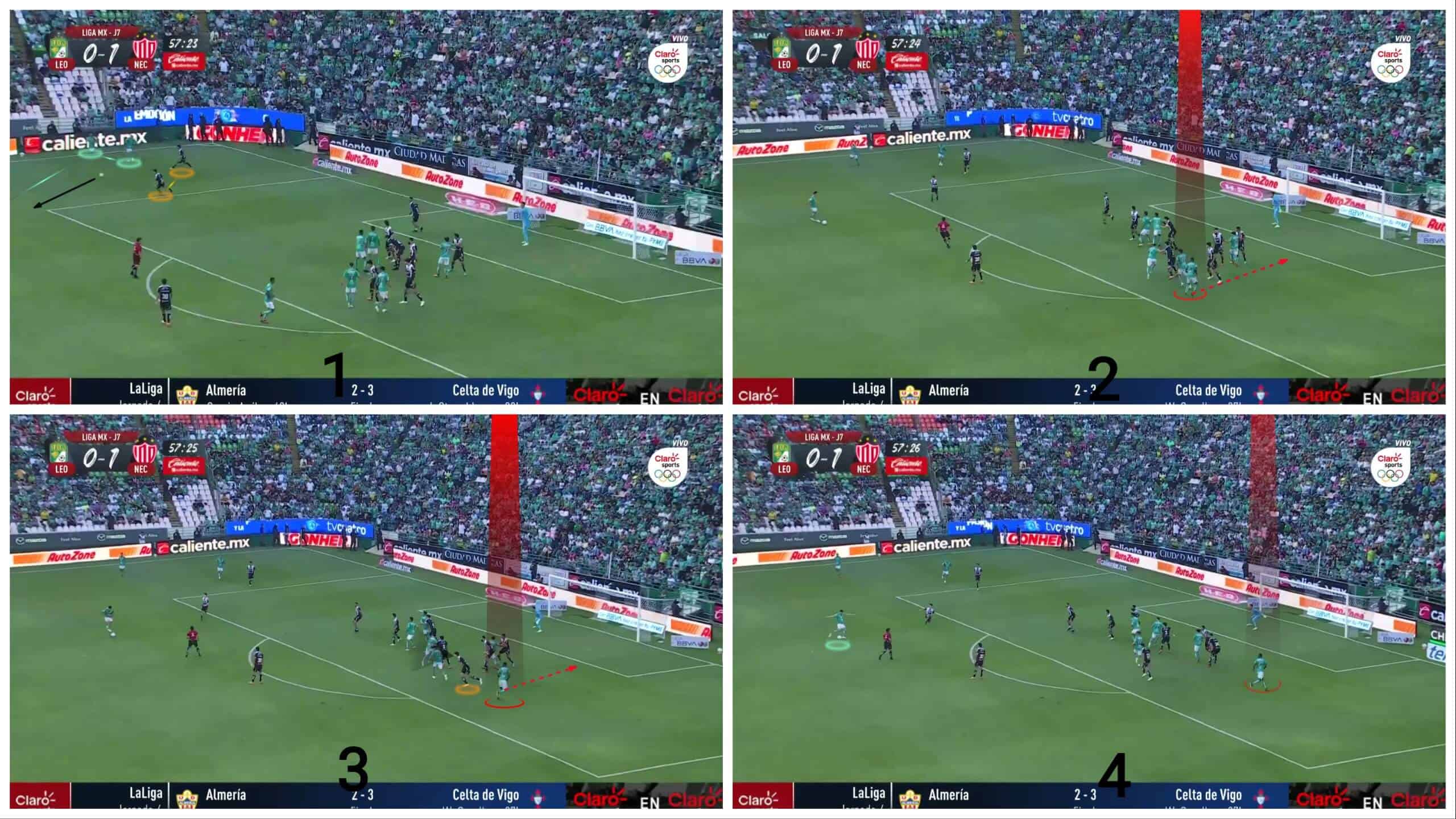
But that player decided to shoot the ball directly, so the goalkeeper saved it, as shown below.
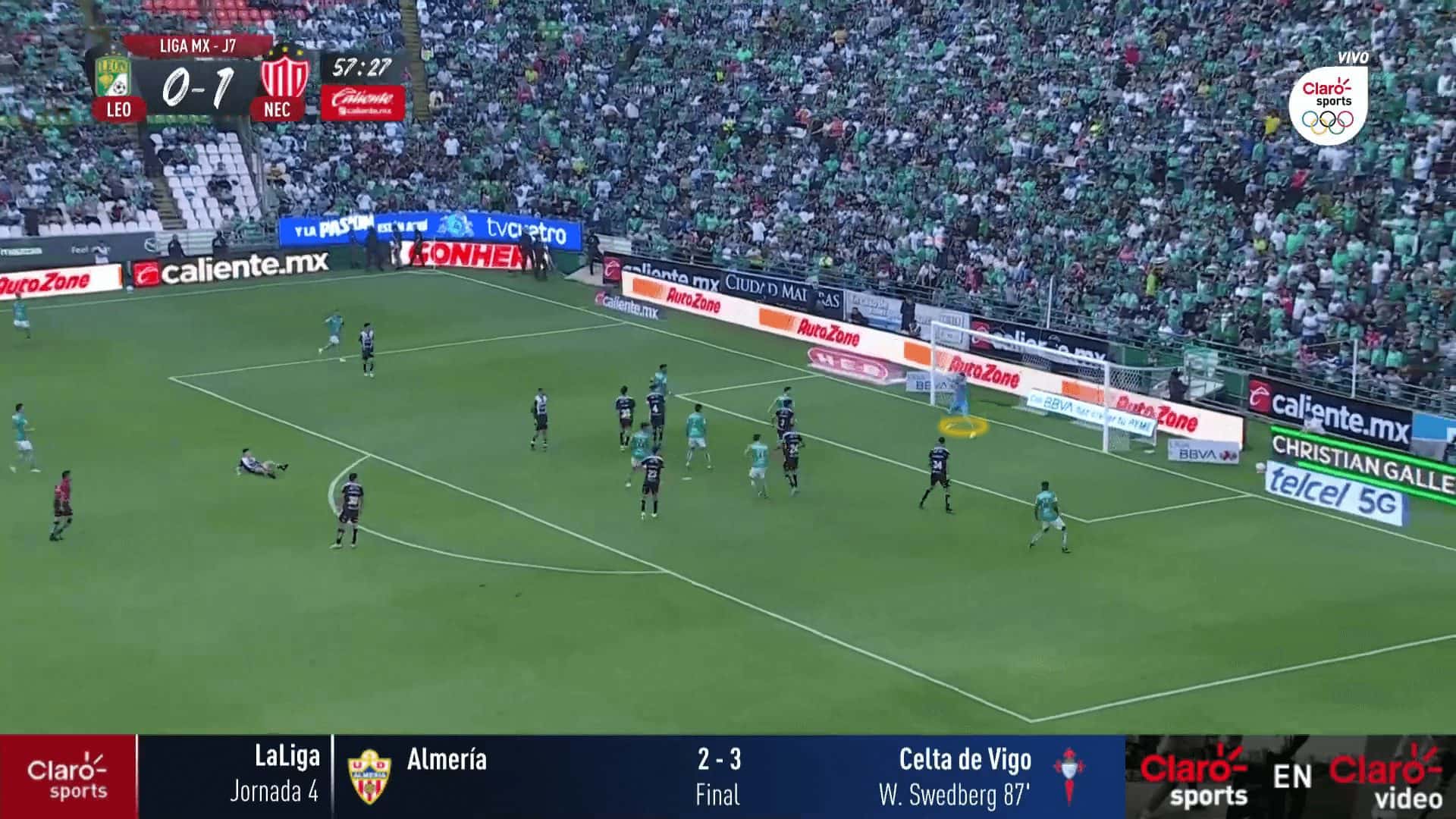
Making the best use of the rebound players
As we have mentioned, they don’t miss any small step to increase the possibility of a corner-routine success, even the rebound.
In the first photo below, a rebound player in the expected path of the out-swinging cross waits for any deflected ball to shoot it directly, but it hits the defender in the case below.
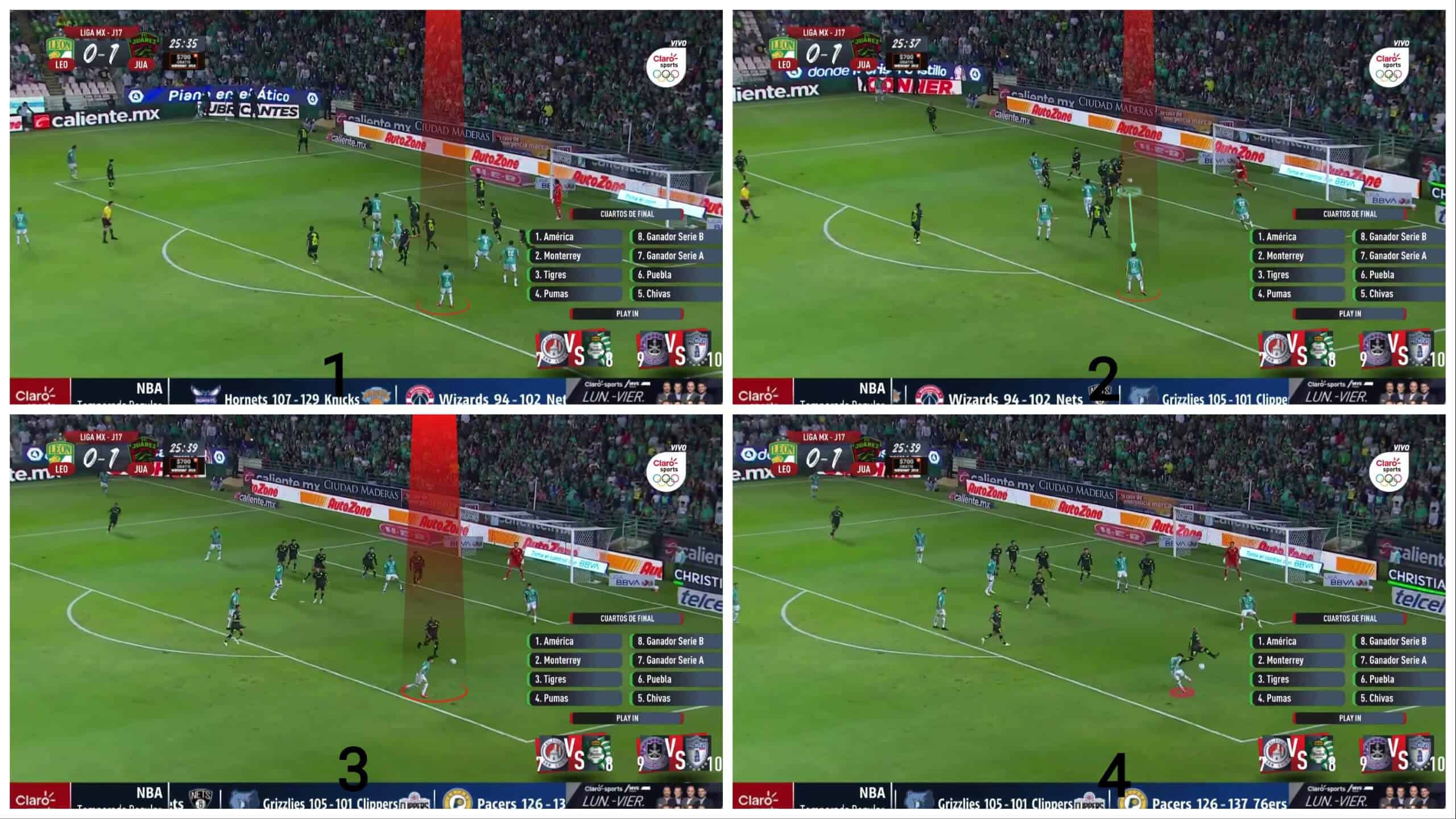
But it is all about consistency to increase the possibility of success, so the same thing happens in this case.
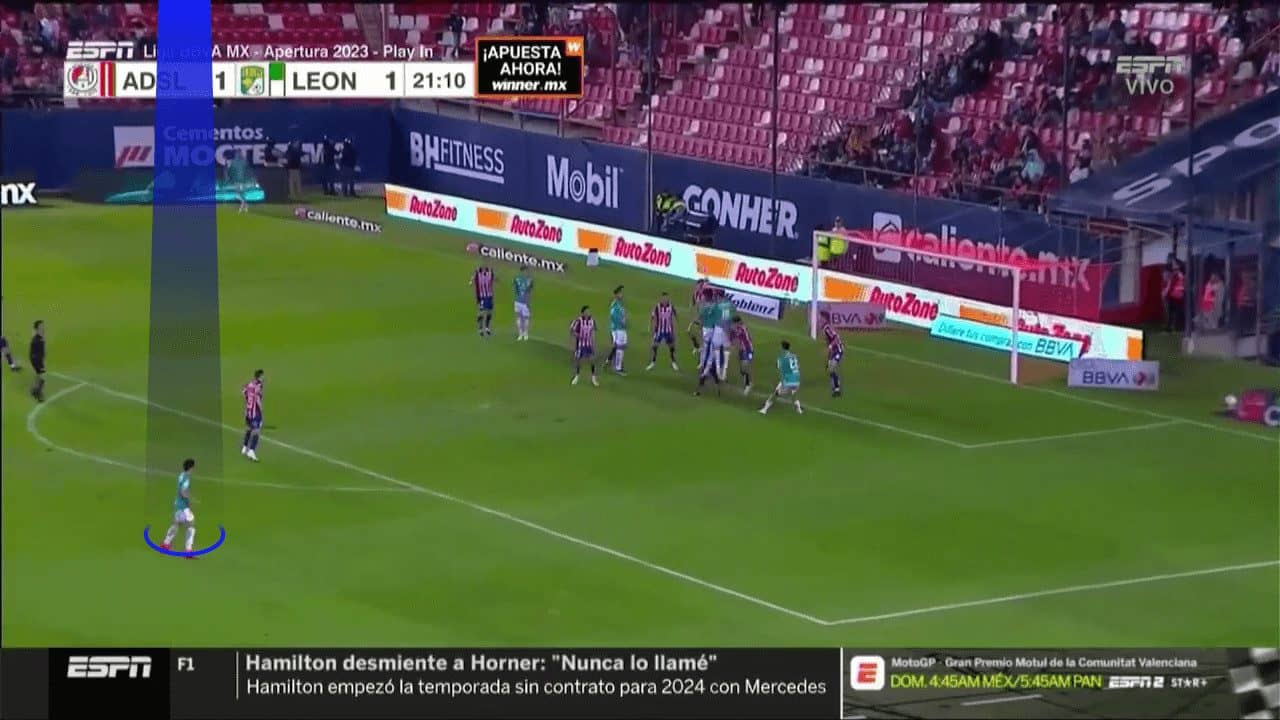
And it almost succeeds, but the ball hits the post, as shown in the two photos below.
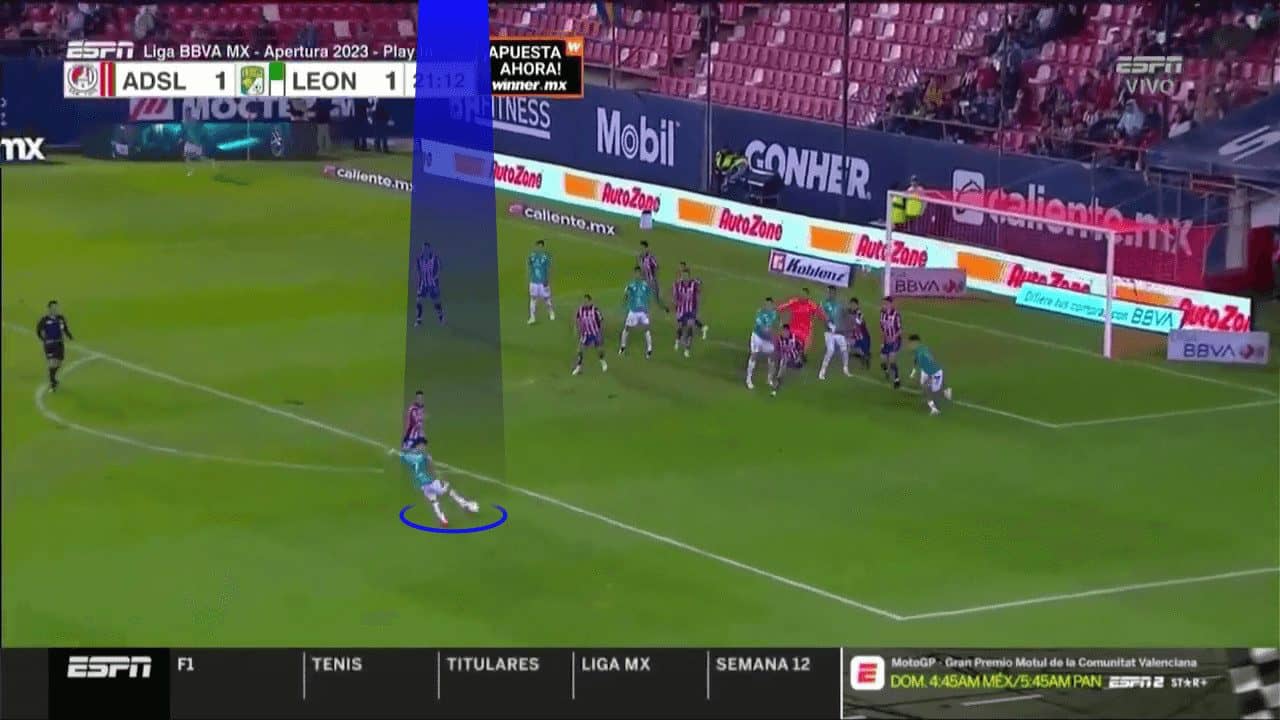
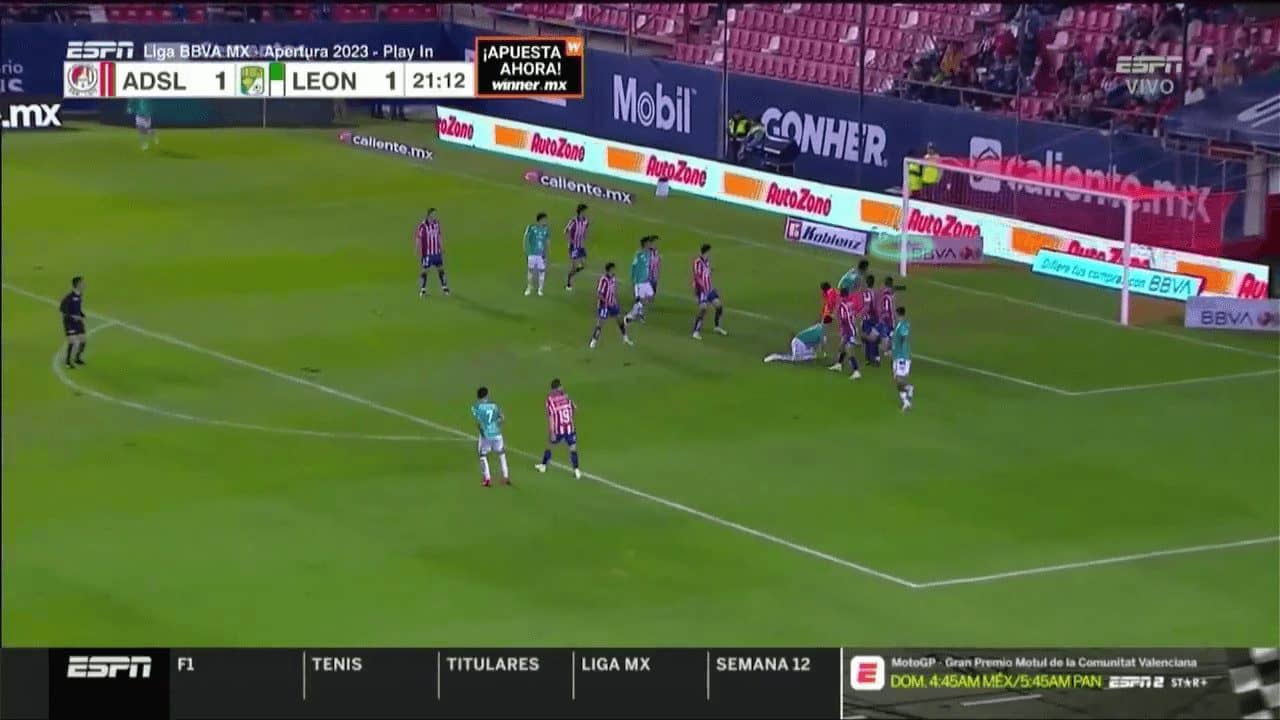
They also use the rebound players differently by asking them to suddenly get into the empty space, as shown below.
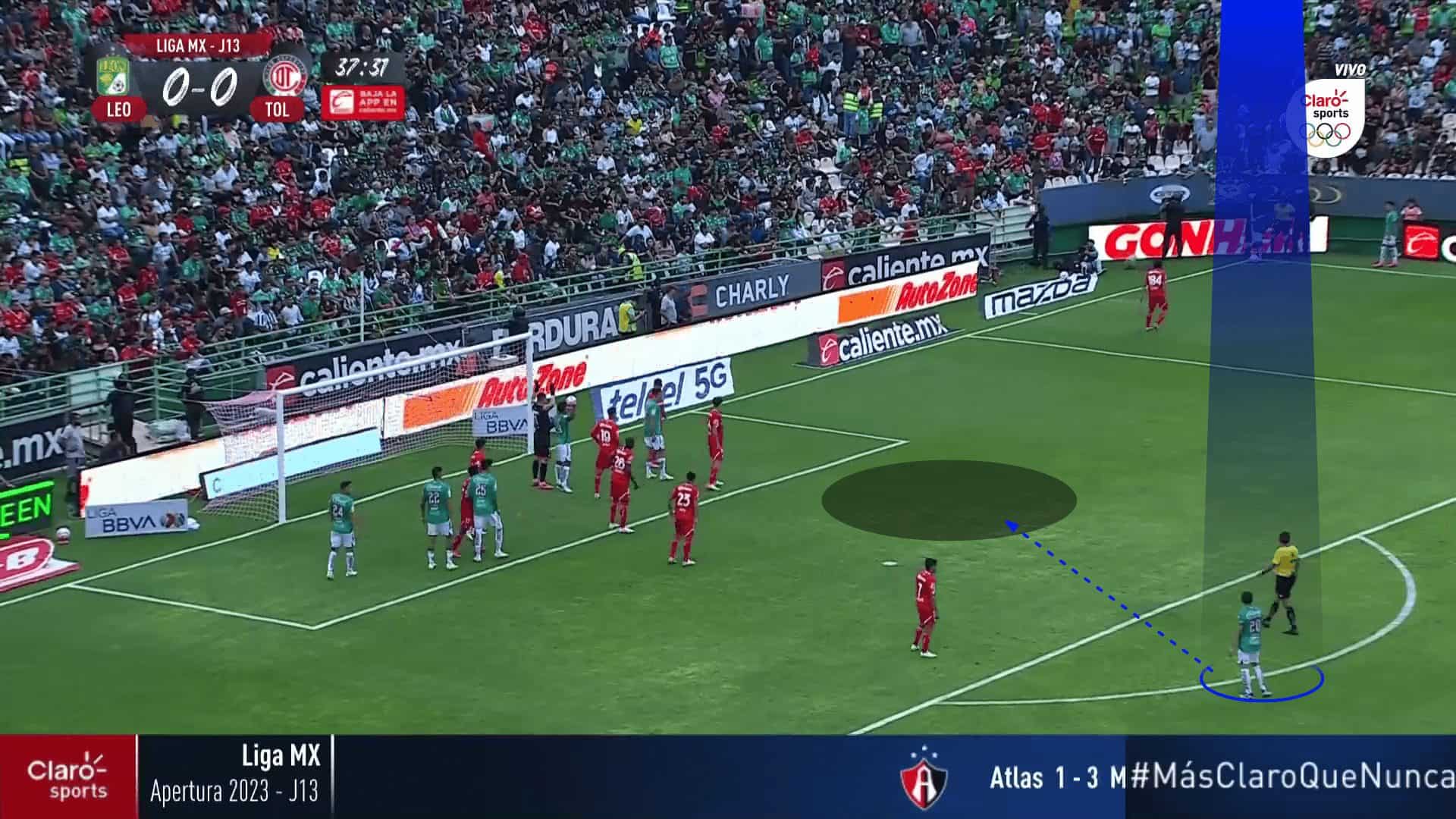
As shown below, the rebound player gets the ball while two players are waiting on the far post.
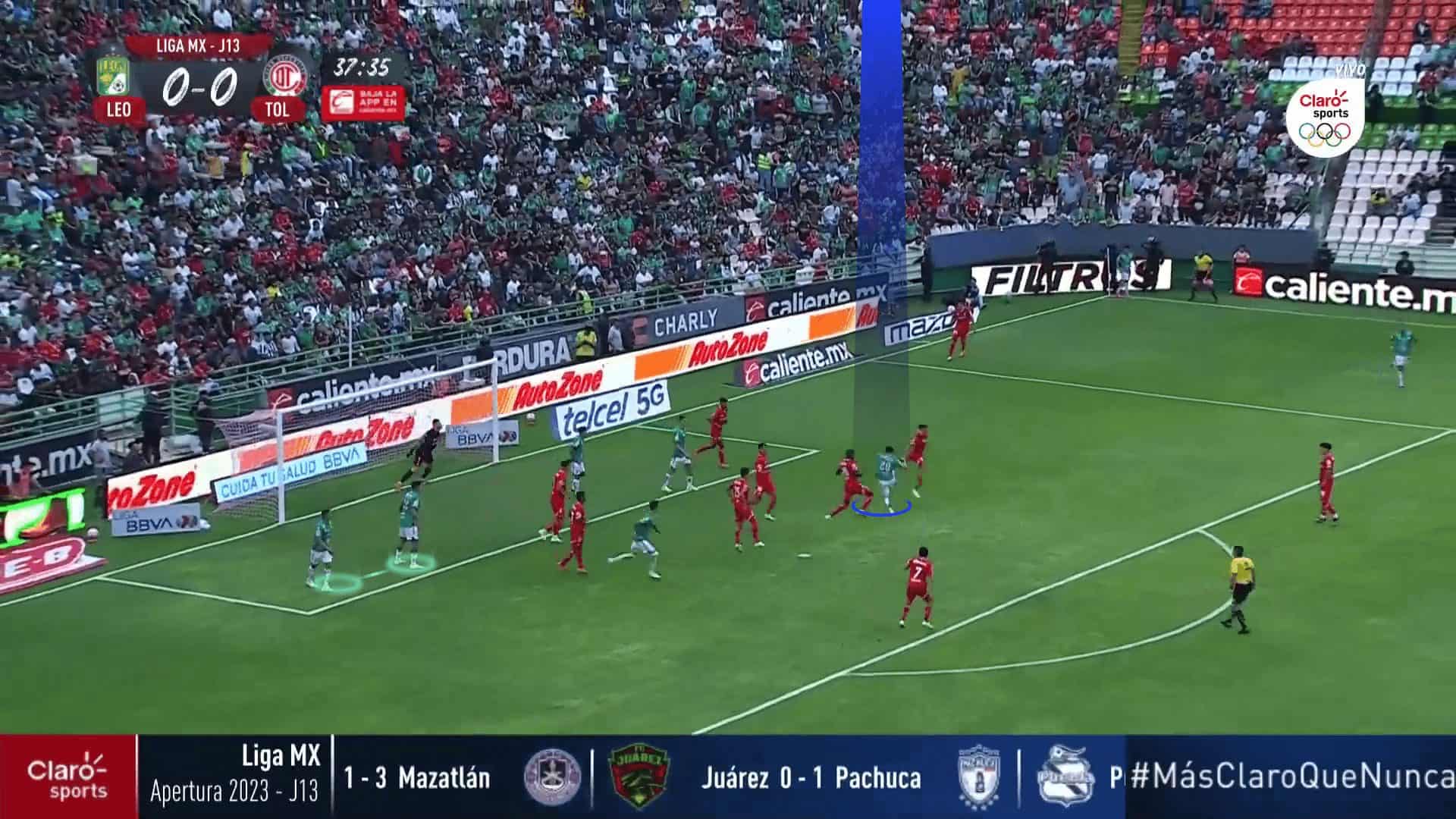
But the defender saves the ball at the last moment, as in the following photo.
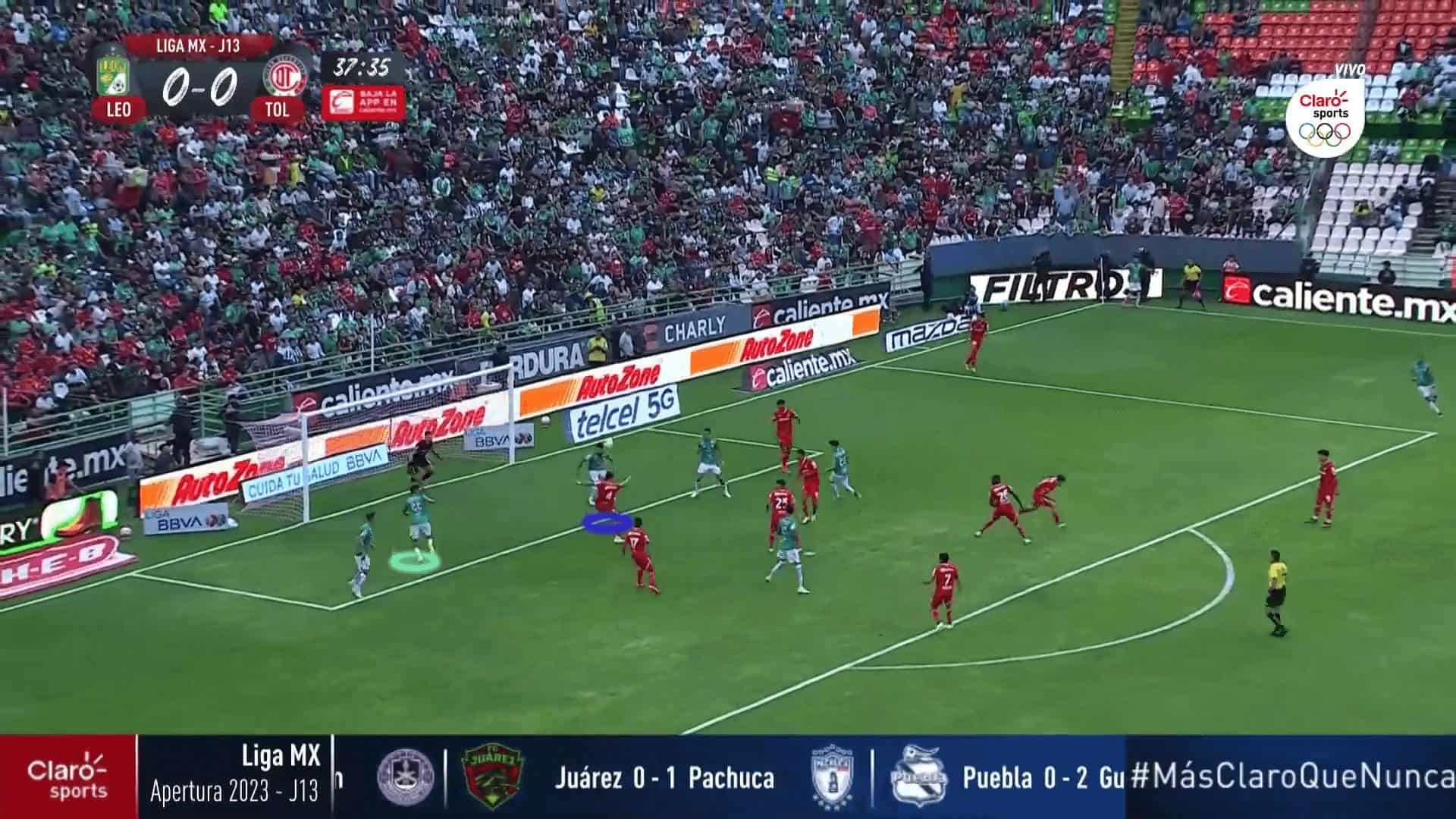
Conclusion
This analysis elucidated the reasons for their superiority in corner kicks over teams that ranked higher than them in the table. How they were versatile and adept in this regard by employing several simple principles, but these simple principles increased the probability of scoring goals from either the first touch or the rebound from the defence.
In this set-piece analysis, we also elucidated how they leveraged their unique and diverse utilization of packs, their deployment of dispersion within the ball frame, their varied application of the short corner, and their competence to capitalize on the opportunity to benefit from the rebound from the defence.

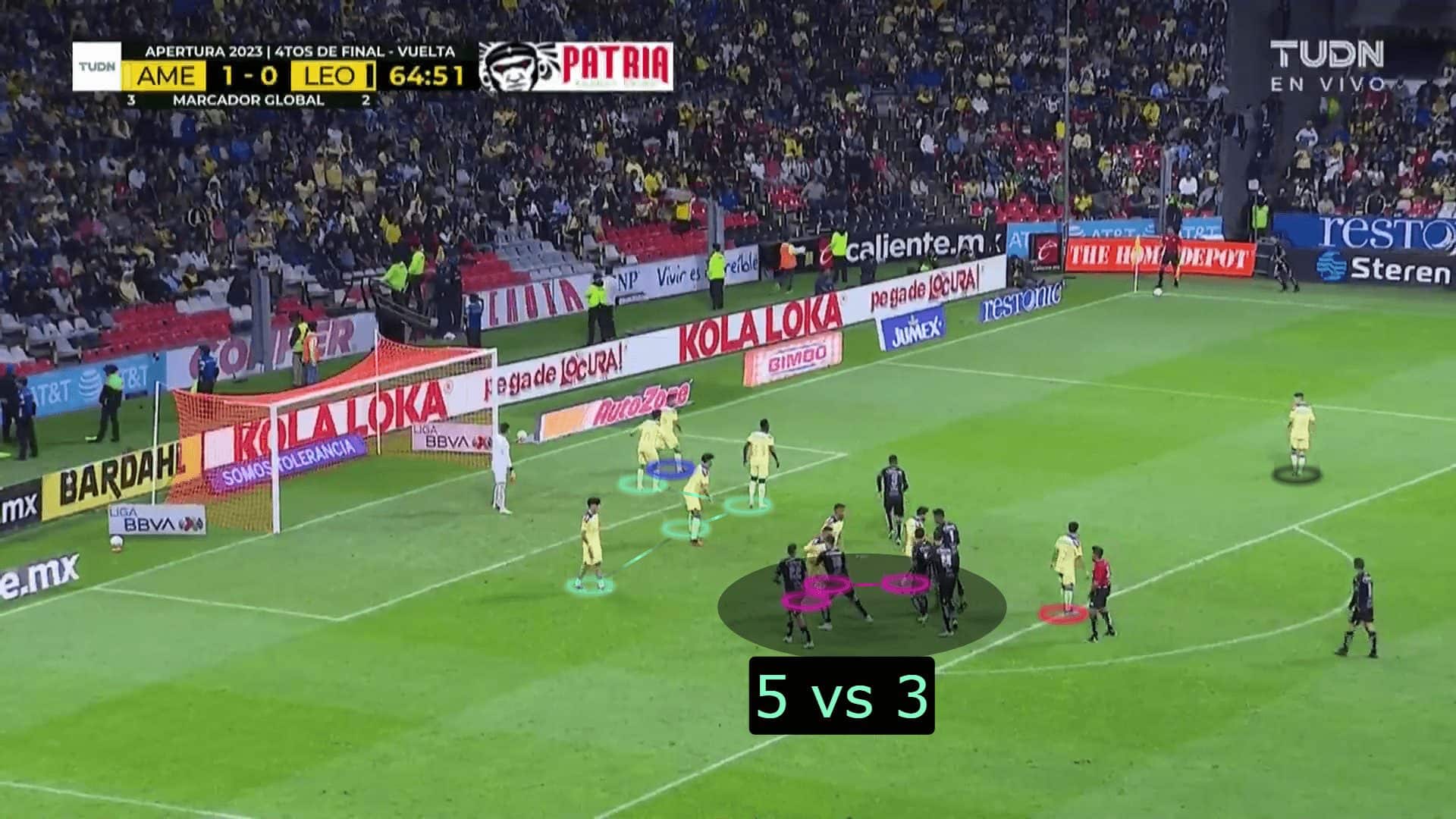




Comments